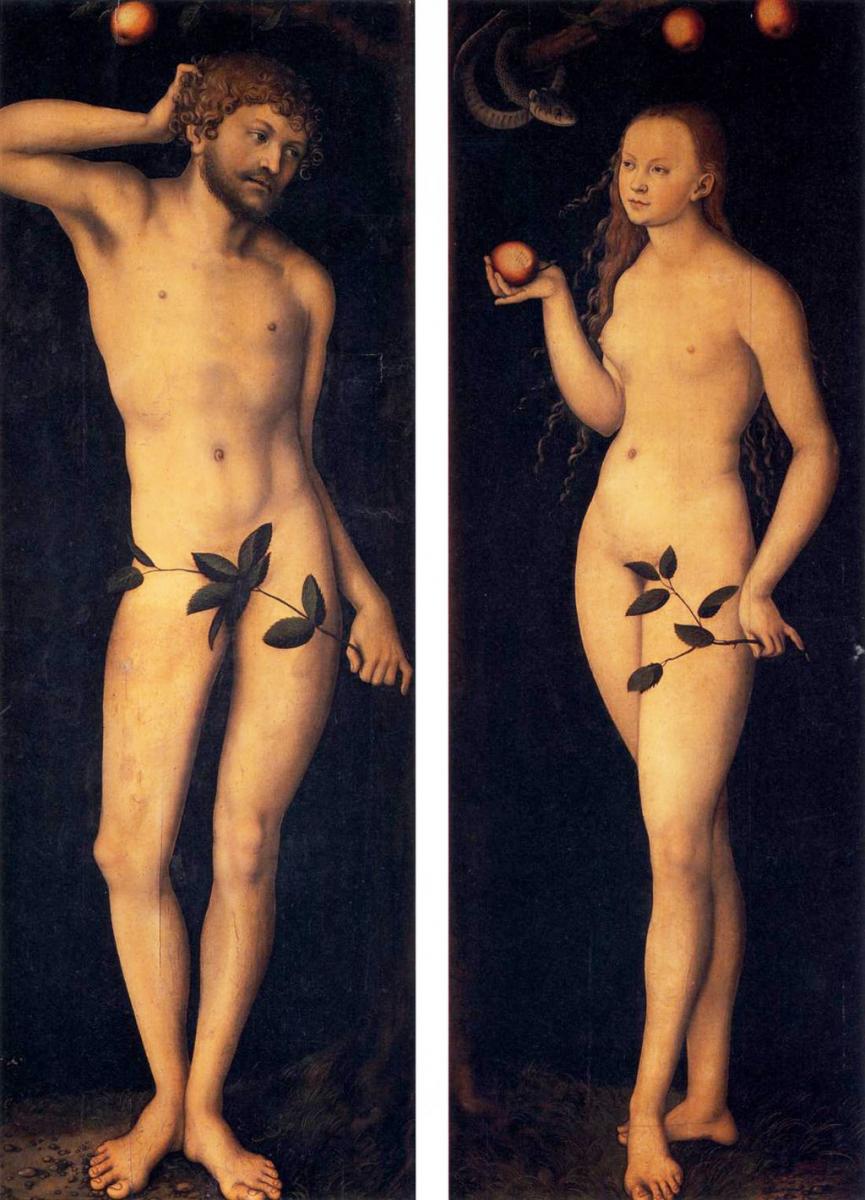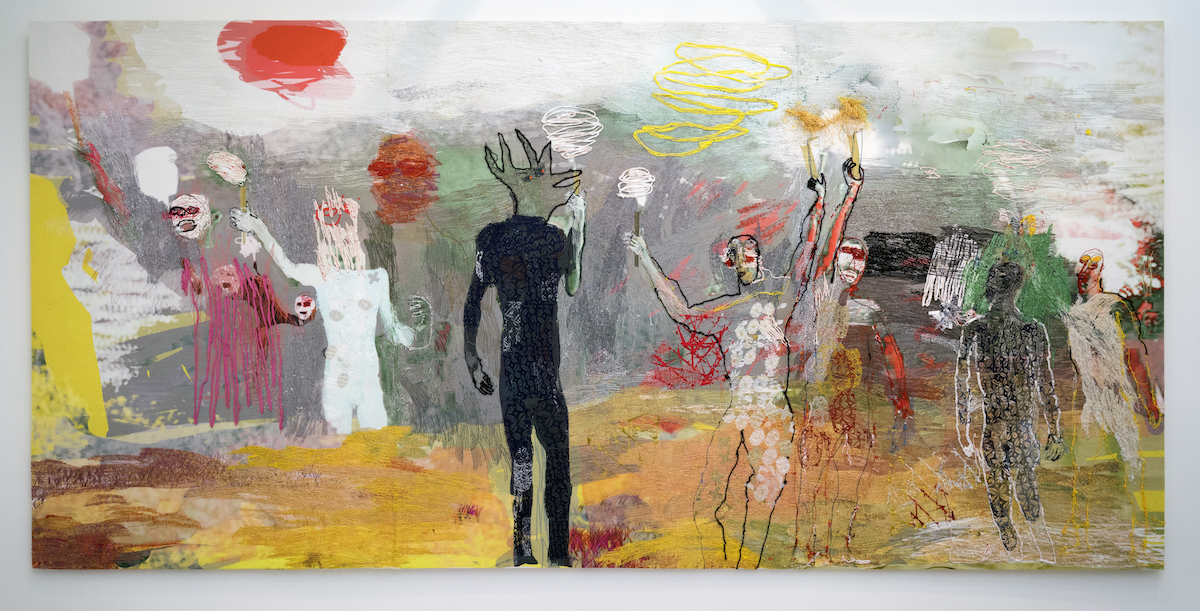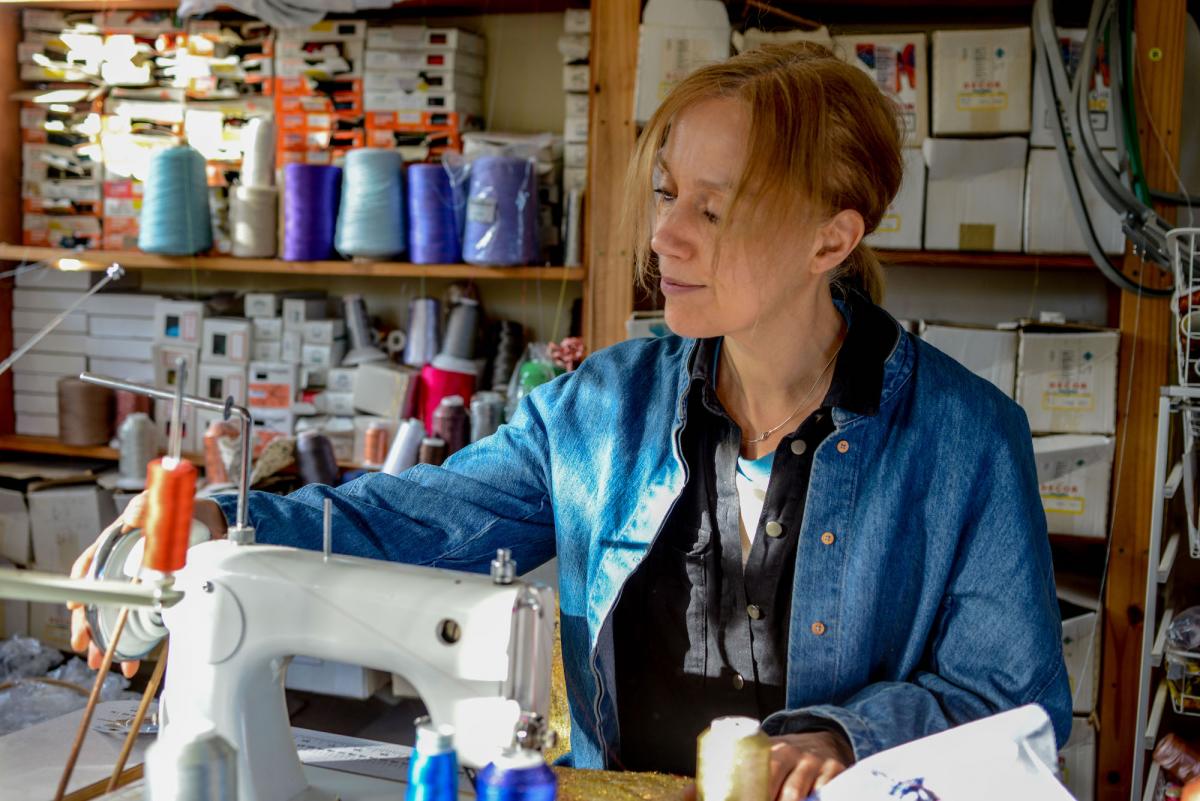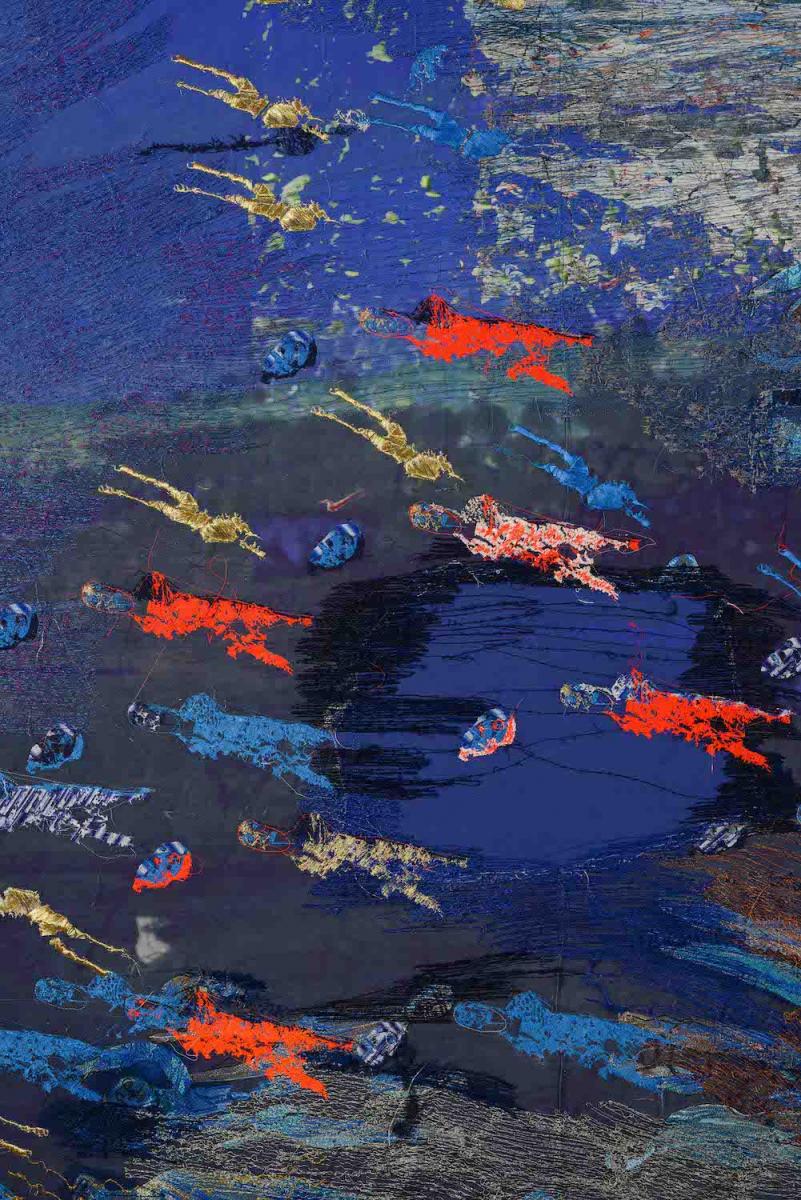This wonderful Cornish workshop and museum is dedicated to the legacy of studio pottery trailblazer Bernard Leach
Threading Stories with Alice Kettle
Threading Stories with Alice Kettle
30 Mar 2020
Alice Kettle is one of the art world’s most exciting textile artists. Her soulful, painterly works, many of epic scale, sit in collections across the globe. As she co-curates – and exhibits in – an upcoming show at Compton Verney, Glenn Adamson reveals some fascinating facts about the artist and her work.
She is inspired by Lucas Cranach
 Lucas Cranach the Elder, Adam and Eve, 1528
Lucas Cranach the Elder, Adam and Eve, 1528
Alice Kettle has been at work on a monumental diptych of Adam and Eve, a response to Lucas Cranach’s iconic depictions of the biblical couple. Kettle’s version captures some of the sinuous, sexy quality of Cranach’s paintings. But her rendition is a frenzy of mark- making – executed not in paint, but with a battery of sewing machines – in a pink-dominated psychedelic palette.
Once complete – and such works take months to create – the diptych is scheduled to be shown as part of the exhibition Fabric: Touch and Identity, at Compton Verney Art Gallery. An exhibition of Cranach’s paintings will be on view there concurrently, so it made sense for Kettle to create her own versions of his most famous paintings. She had other reasons to be interested in Adam and Eve, too. They were the first people ever to have sex, to procreate. The first, also, to feel the need to cover up their nudity, in the moment of their expulsion from the Garden of Eden. If they carried within them humanity’s DNA, they also planted the seed of shame. And in that moment, cloth touched skin for the very first time.
She reveals the eroticism of cloth
 Alice Kettle, Golden Dawn, 2015. 160 X 360cm; Thread On Printed Canvas; Photo Joe Low/Courtesy Candida Stevens Gallery In Collection Of Shipley Art Gallery
Alice Kettle, Golden Dawn, 2015. 160 X 360cm; Thread On Printed Canvas; Photo Joe Low/Courtesy Candida Stevens Gallery In Collection Of Shipley Art Gallery
The exhibition for Compton Verney, which Kettle co-curates with Professor Lesley Millar, is an outgrowth of their long-running collaboration The Erotic Cloth (their co-edited volume of that title came out in 2018). It is a cliché-busting project, which pushes past easy assumptions about gender and sexuality. It will include not only Kettle’s work, but also selections from the Compton Verney collection, in which cloth is used as an encoded language of sensuality. Among them will be Mrs Baldwin in Eastern Dress by Joshua Reynolds, a heady compound of seductive textures, period exoticism and theatrical self-regard.
Kettle says that her research for The Erotic Cloth prompted her to examine her own artistic motivations as an artist. ‘I’ve worked with the naked form for a long time – why? Maybe there was something I didn’t know, or didn’t like to admit.’
She has amplified migrants’ voices...
Alice Kettle, Ground: Thread Bearing Witness, (detail) 2018. 300 X 800cm. Photo: Joe Low. Courtesy Candida Stevens Gallery
Kettle’s exhibition Thread Bearing Witness was presented at the Whitworth Art Gallery, Manchester, in 2018. It was the culmination of two years’ collaboration with migrant communities. This work began with her daughter, Tamsin Koumis, who serves as a legal counsellor to refugees in Dunkirk. Through Tamsin, Kettle says, ‘I became immersed in the critical narrative around the humanitarian crisis being enacted on our doorstep.’
 Photo Joe Low
Photo Joe Low
Kettle did not want to tell migrants’ tales for them. Instead, she thought of herself as ‘the pattern maker, the narrator, the maker of the cloth, the ground which receives the gifts of those who wish to tell their story’. She developed a multilayered artistic strategy anchored on drawings made by participants at refugee camps, relocation centres and women’s support groups. One thing that surprised her was the optimism of the imagery they created – birds, hearts, trees, flowers. ‘Maybe they were thinking about a world they want to be in,’ Kettle says – rather than the one they had endured. To her, this was the redemptive core of the project: a demonstration of ‘making as a way to create positive change’.
... and celebrated their expertise
 Alice Kettle, Sea – Thread Bearing Witness (detail). 300 X 800cm; Cotton, Rayon and Metallic Thread On Printed Canvas; Photo Joe Low; Courtesy Candida Stevens Gallery
Alice Kettle, Sea – Thread Bearing Witness (detail). 300 X 800cm; Cotton, Rayon and Metallic Thread On Printed Canvas; Photo Joe Low; Courtesy Candida Stevens Gallery
Another thing that struck Kettle was the expertise of those she was encountering: ‘We tend to see migrants as a group, not individuals, but often they are professionals, highly skilled.’ With this in mind she made space in the exhibition for their drawings and embroideries. These surrounded a trio of large-scale embroideries entitled Sea, Ground and Sky. In their materiality and horizontal format, these echo the Bayeux Tapestry – another sewn narrative of arrival to Britain. But instead of a sequential narrative, they offer immersive flux, swirling with crowdsourced imagery, and conveying the complex experience of human displacement.
Two of the big embroideries – the densely worked Ground and the ethereal Sky– incorporate hundreds of drawings by migrant participants; but Kettle decided to design Sea entirely by herself. It is a memorial to those migrants who have perished en route – voices who could not be included in the project.
Glenn Adamson is a curator and writer who works at the intersection of craft, design history and contemporary art. He is a Senior Scholar at the Yale Center for British Art.
SEE
Fabric: Touch and Identity and Cranach: Artist and Innovator; at Compton Verney Art Gallery & Park, Warwickshire; dates TBC; comptonverney.org.uk
Unbound: Visionary Women Collecting Textiles, which features Alice Kettle’s huge Three Caryatids (1989–91), Two Temple Place, London; dates TBC; twottempleplace.org
FIND OUT MORE
An extended version of this article first appeared in the Spring 2020 issue of The Arts Society Magazine, available exclusively to Members and Supporters.
Alice Kettle is Professor of Textile Arts at Manchester School of Art, Manchester Metropolitan University; see more of her works at alicekettle.co.uk / candidastevens.com
About the Author
Glenn Adamson
JOIN OUR MAILING LIST
Become an instant expert!
Find out more about the arts by becoming a Supporter of The Arts Society.
For just £20 a year you will receive invitations to exclusive member events and courses, special offers and concessions, our regular newsletter and our beautiful arts magazine, full of news, views, events and artist profiles.
FIND YOUR NEAREST SOCIETY
MORE FEATURES
Ever wanted to write a crime novel? As Britain’s annual crime writing festival opens, we uncover some top leads
It’s just 10 days until the Summer Olympic Games open in Paris. To mark the moment, Simon Inglis reveals how art and design play a key part in this, the world’s most spectacular multi-sport competition



